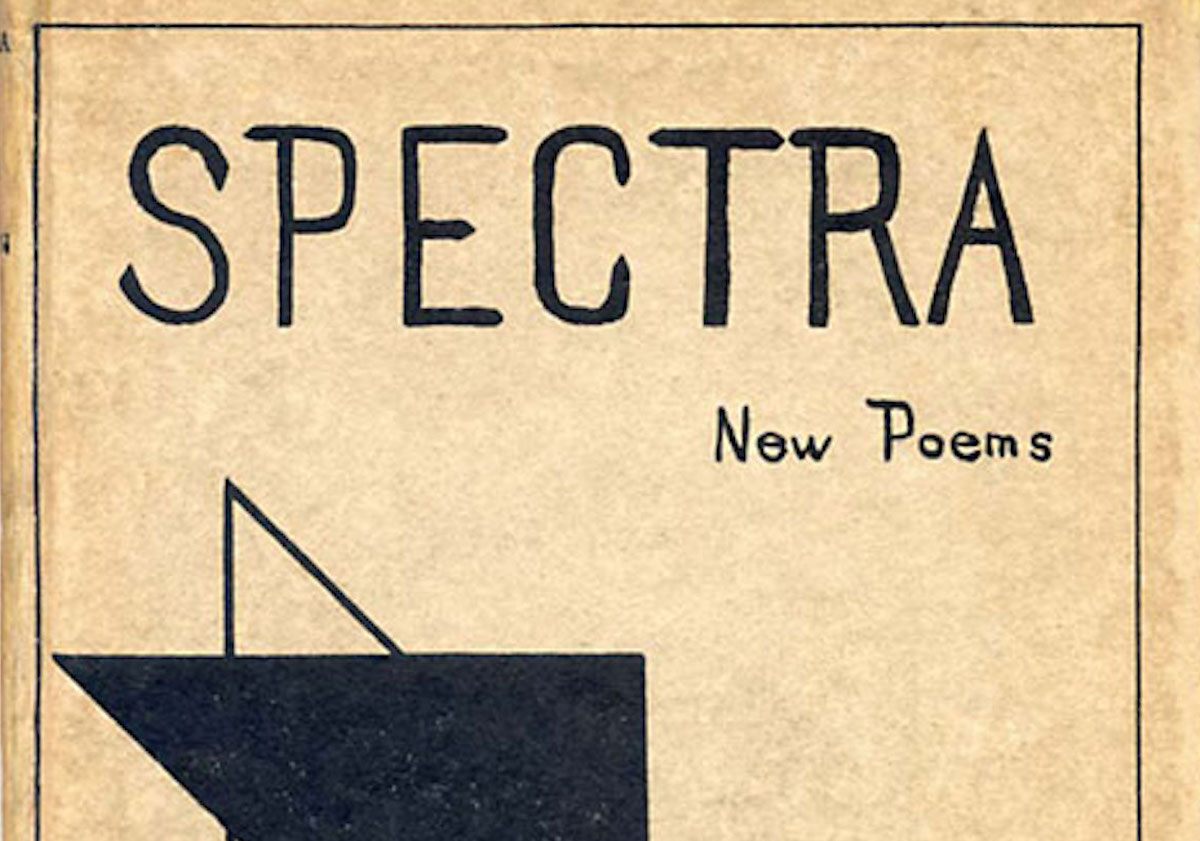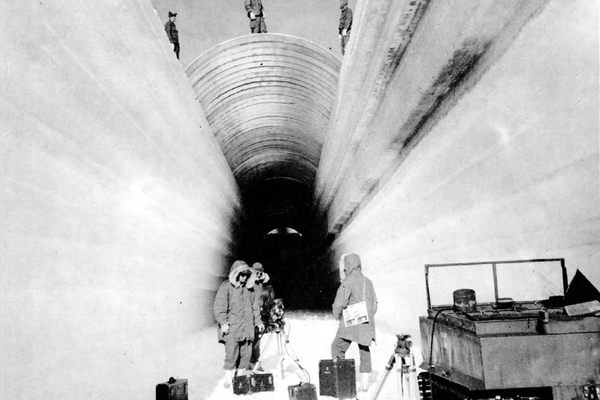The Hoax Poetry Movement That Accidentally Became Legitimate
How Spectra went mainstream.

Witter Bynner hated Modernist poetry. A rising literary star who was briefly engaged to Edna St. Vincent Millay, Bynner felt that the new crop of free-verse poetry movements was becoming absurd. Not only were these poets failing to create real art, but they also took themselves far too seriously.
So he decided to satirize it all.
In February 1916, at a ballet entitled Le Spectre de la Rose, Bynner was criticizing the proliferation of experimental poems to some friends when he made a joke. He asked whether they had heard of the poetry movement known as Spectrism—a name he spontaneously invented based on the title of the ballet.
Later, he told his Harvard friend Arthur Davison Ficke about the trickery, and together the duo decided to make “Spectrism” a reality. Their main goal was to parody the Modernist poetry they so distrusted.

According to Suzanne W. Churchill’s The Lying Game: Others and the Great Spectra Hoax of 1917, the two men rented a hotel room and “from ten quarts of excellent Scotch in ten days extracted the whole of the Spectric philosophy.” They even devised pseudonyms for themselves. Bynner was to write as Emanuel Morgan and Ficke as Anne Knish.
Bynner submitted the resulting Spectrist manifesto to his publisher, thinking its contents were so ridiculous that his publisher would immediately see through the prank. But, in an omen of things to come, the publisher agreed to print it, thinking it was a real work. Only shortly before publication did Bynner and Ficke let him in on the joke—he agreed to publish it anyway.
That year, the release of Spectra: A Book of Poetic Experiments added the movement to the pantheon of Modernist poetry. The manifesto described Spectra, also known as Spectrism, as an attempt to “see the spectre in our life and capture the varied light of the spectrum” and argued that “the poet’s spectres should touch with a tremulous vibrancy of ultimate fact the reader’s sense of the immediate theme.”
Writing as Emanuel Morgan and Anne Knish (in a drunken stupor), Bynner and Ficke elaborated:
The theme of a poem is to be regarded as a prism, upon which the colorless white light of infinite existence falls and is broken up into glowing, beautiful, and intelligible hues… Just as the colors of the rainbow recombine into a white light,— just as the reflex of the eye’s picture vividly haunts sleep,— just as the ghosts which surround reality are the vital part of that existence,—so may the Spectric vision, if successful, synthesize, prolong, and at the same time multiply the emotional images of the reader.
The manifesto also contained several Spectrist poems, including Ficke’s “Opus 200,” which parodied T.S. Eliot’s “The Love Song of J. Alfred Prufrock”:
If I should enter to his chamber
And suddenly touch him,
Would he fade to a thin mist,
Or glow into a fire-ball,
Or burst like a punctured light-globe?
It is impossible that he would merely yawn and rub
And say—“What is it?”
Bynner, meanwhile, criticized poets who took themselves too seriously—describing, in his “Portrait of a Poet,” a writer trying to pass his masturbation off as art:
Out of the infinite darkness,
Without end, without beginning
He towers; and above him his genius,
Sends down ray after ray.From his calm and careless hand
Drop the bright bubbles of his dreaming;
He showers them indifferently: precious globes,
Beside whose luminous iridescence
The sun is blackness.
At his feet Lap the Flames of Hell…
A later recruit to Spectrism, Marjorie Allen Seiffert, who Bynner and Ficke convinced to join their fake movement apparently by locking her in her room “determined that not until she had become Spectric should she emerge,” parodied middle-aged male writers under the pen name Elijah Hay. According to The Lying Game: Others and the Great Spectra Hoax of 1917, her work featured nostalgia for a lost boyhood when “‘Night’ was not a ‘sodden’ fool, but a ‘lion /No … a python’ or ‘a siren.’”

Despite Bynner and Ficke’s assumption that Spectra was an obvious joke, their movement was immediately accepted as legitimate and received widespread media attention. Though a number of reviews were negative—including one from The New York Herald that called the movement a “daughter of Futurist poetry, a granddaughter of vers libre, and no relation at all to real poetry”—the book was immensely popular. One journalist said it was “as close to being a best seller as poetry ever reaches.”
In an ironic twist, The New Republic asked Bynner himself to review Spectra, being unaware of the book’s true authorship. Bynner agreed. His review was positive, though he spent much of it critiquing the Imagist movement he despised. Imagists, unlike Spectrists, he wrote, “were so concerned with ‘technique’ that they ‘don’t connect’ with readers.”
Spectra thus went mainstream. The book The Young Idea: An anthology of opinion concerning the spirit and aims of contemporary American literature dissected the movement for several pages. Magazines like Poetry, Others, The Little Review, Reedy’s Mirror, and Forum all accepted for publication Spectrist poems.
Others: A Magazine of the New Verse—the experimental poetry magazine that published the likes of Wallace Stevens and whose emphasis on free verse led to the accusation that it was “a haven for the wildest orgies of proud-spirited youth”—especially embraced the new Spectrist movement. Not only did Others publish numerous Spectrist poems, but in January 1917, they dedicated an entire issue to the new genre.

Bynner’s elaborate practical joke had more than succeeded. According to author Lynn Cline, Spectra “was just convincing enough to be believable in a day when everyone was trying the new and was afraid of rejecting it.”
Yet the joke, in many ways, was ultimately on Bynner himself.
In April 1918, when Spectra was announced to have been a hoax—apparently because Bynner admitted to being its true creator during a Q&A—the revelation provoked a flurry of media coverage, including a feature in the New York Times Magazine. But the general reaction was bafflement. Though many poets—including William Carlos Williams—admitted to having been duped, they expressed confusion as to how such thought-provoking pieces could be mere spoofs.
In fact, the public liked Bynner’s and Ficke’s Spectrist poems much more than the poets’ “real” work. An article in The Little Review summed it up best: “I confess to a deep ignorance of the nature of the hoax. If a man changes his name and writes better stuff, why does that make the public so ridiculous?”
Bynner was dumbfounded. For years after, he struggled to escape the legacy of his Spectrist writings. He later wrote: “the worst of it is that I can’t get rid of Emmanuel Morgan! … I don’t know where he leaves off and I begin.”

Separately, he confessed that “many a discerning critic of poetry is convinced to this day that, liberated by our pseudonyms and by complete freedom of manner, Ficke and I wrote better as Knish and Morgan than we have written in our own persons.”
He added: “Once in a while we think so ourselves.”
In a recent analysis of the Spectrist movement, the poet Bob Perelman said: “the real scandal for me … is that there is no hoax poetry … That to me says something quite interesting and provocative about poetry. That maybe poetry itself has something tremendously hoax-like at its heart.”
Agreeing with popular sentiment, Perelman added: “It’s the best thing that the hoaxers ever wrote, were these hoax poems.”
Perhaps, by the end of his life, Bynner accepted this, too. His final book before his death, New Poems 1960, featured experimental poems based on his dreams. A review of it notes that the book “recalls the wildness of the Spectra poems in its enigmatic (and at times bizarre) verses.” Spectra lived on.








Follow us on Twitter to get the latest on the world's hidden wonders.
Like us on Facebook to get the latest on the world's hidden wonders.
Follow us on Twitter Like us on Facebook